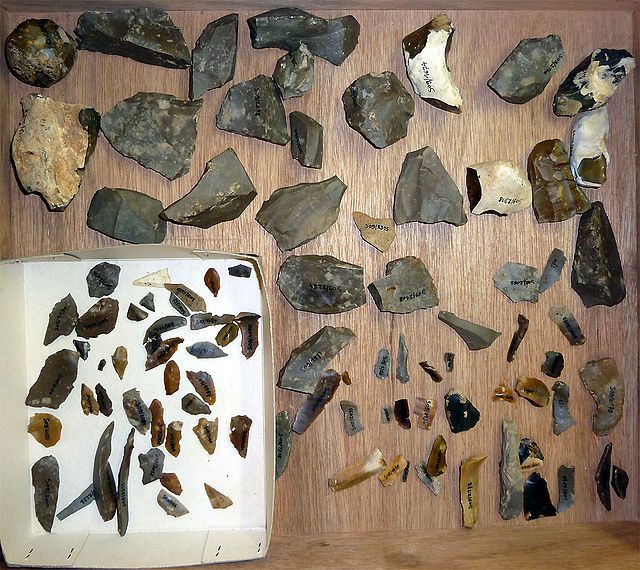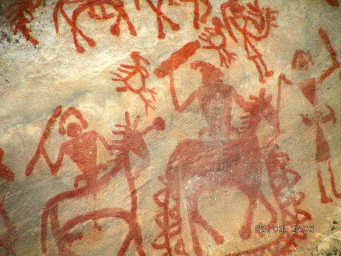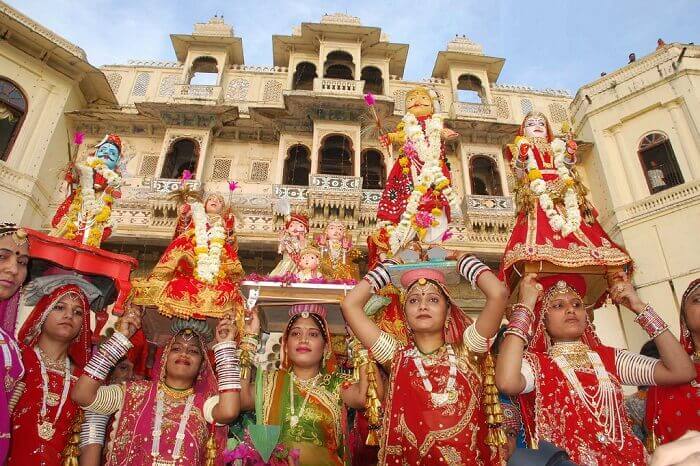The last stage of Old Stone age or Palaeolithic Age was followed by Mesolithic or Middle Stone Age in Rajasthan ( in India). The transition from the Palaeolithic period to Mesolithic period is marked by transition from Pleistocene period(2.58 million years ago – 10,000BC) to Holocene (10,000 BC – till now) and favorable changes in the climate. The climate became warmer and humid and there was expansion of flora and fauna contributed by increased rainfall. This led to availability of new resources to humans.
Tools of Mesolithic Age:
- The tools are Mesolithic age were smaller in size and better in finishing (more geometric) than the Palaeolithic age and are called as Microliths.
- The main tool types are backed blades, obliquely truncated blades, points, crescents, triangles and trapezes.
- Some of the microliths were used as components of spearheads, arrowheads, knives, sickles, harpoons and daggers.
- Use of bow and arrows for hunting has been documented by Mesolithic man in rock art of the period.

Changes in Society of Mesolithic Age:
- Domestication of Animals & Farming:
- The early period of Mesolithic age was based on the hunting, fishing and food gathering, slowly domestication of animals and cultivation of crops made their way into human life.
- The earliest evidence of domestication of animals has been provided by Adamagarh in Madhya Pradesh and Bagor in Rajasthan.
- The first animals to be domesticated were dog, cattle, sheep and goat and the first crops to be cultivated were wheat and barley.
- Nomadism to Sedentary settlements:
- The favourable climate, better rainfalls, warm atmosphere and increased food security led to reduction in nomadism to seasonally sedentary settlement and increased population.
- They moved to new areas such as nearby rivers which provided water.
- First human colonization of the Ganga plains took place during this period.
- Beginning of customs:
- The mesolithic age saw beginning of the tradition of various ways of intentional disposal of the dead.
- Mesolithic human burials have been found at Bagor in Rajasthan, Langhnaj in Gujarat, Bhimbetka in Madhya Pradesh etc.
- Emergence of Arts:
 The rock painting of Mesolithic period is found in Adamgarh, Bhimbetka of Madhya Pradesh and Pratapgarh, Mirzapur of Rajasthan.
The rock painting of Mesolithic period is found in Adamgarh, Bhimbetka of Madhya Pradesh and Pratapgarh, Mirzapur of Rajasthan.- The paintings are made mostly in red and white pigments, made form the nodules found in rocks and earth. (Red made by minerals of iron oxide and white by limestone)
- The subject matter of the paintings are mostly wild animals and hunting scenes, though there are some related to human social and religious life such as sex and child birth.
Mesolithic sites in Rajasthan:
- The Pachpadra basin, Sojat Area & Tilwara of Rajasthan are rich Mesolithic sites and lot of microliths have been discovered.
- However, Bagor is the largest mesolithic site in India.

